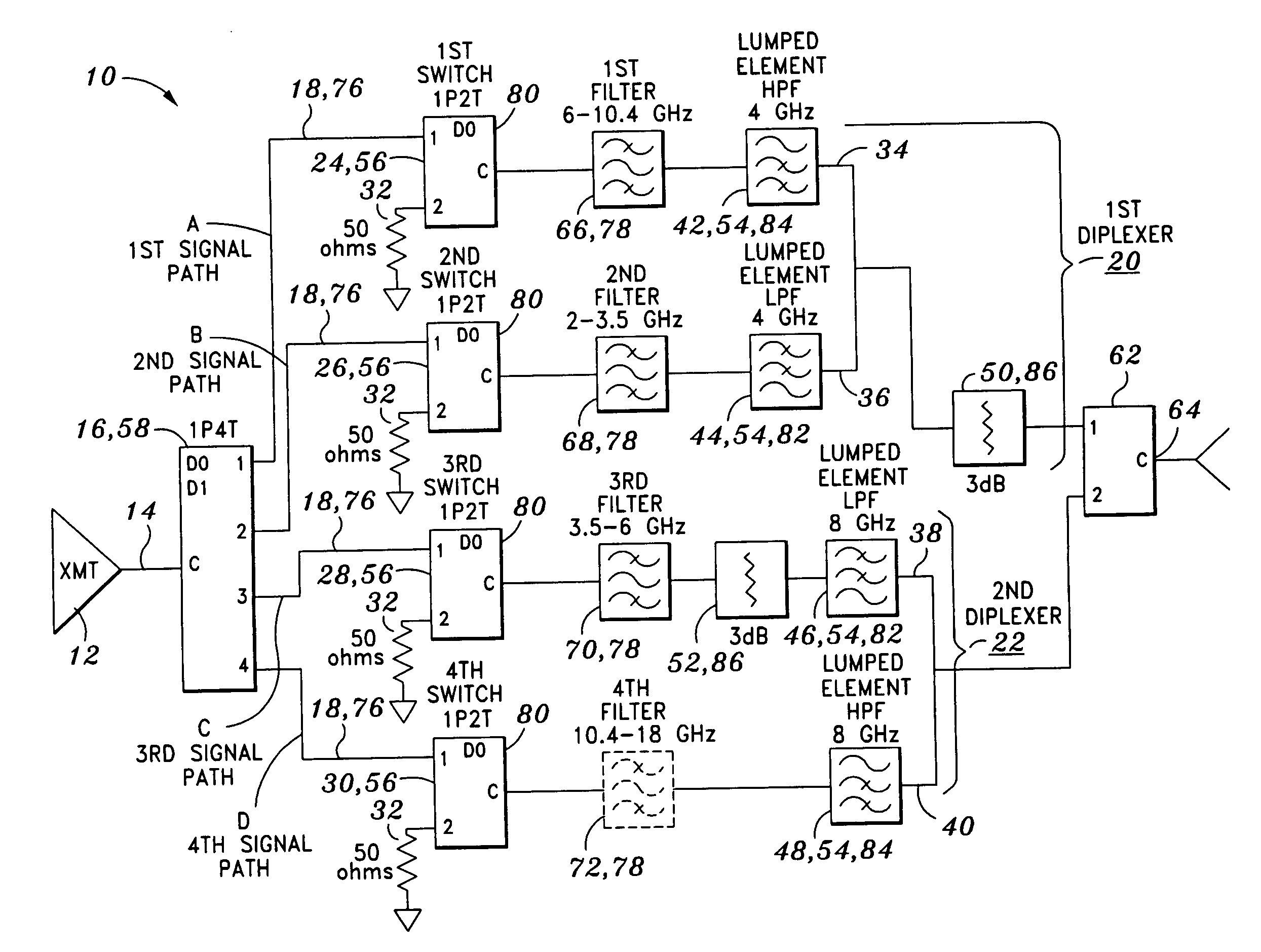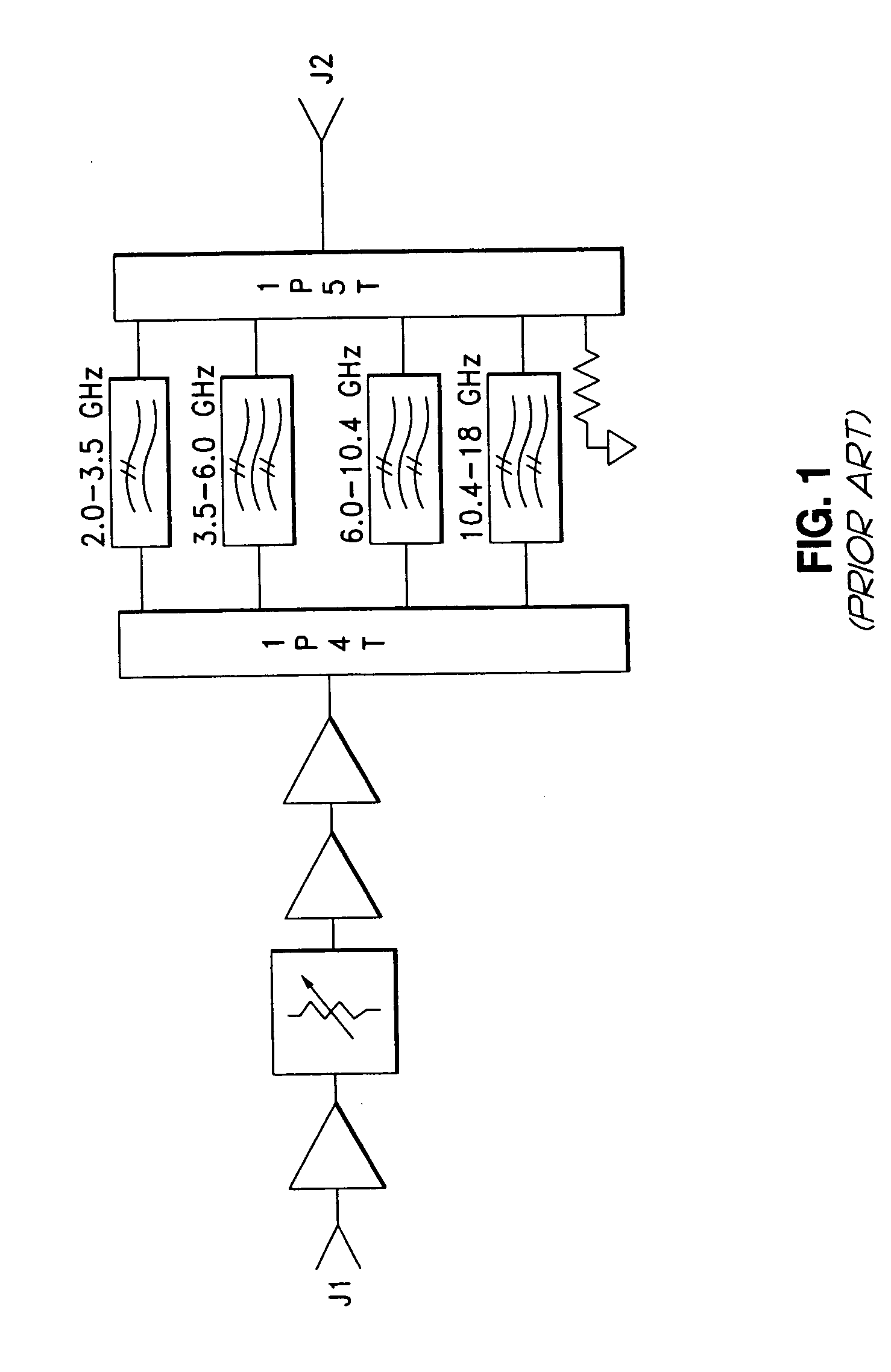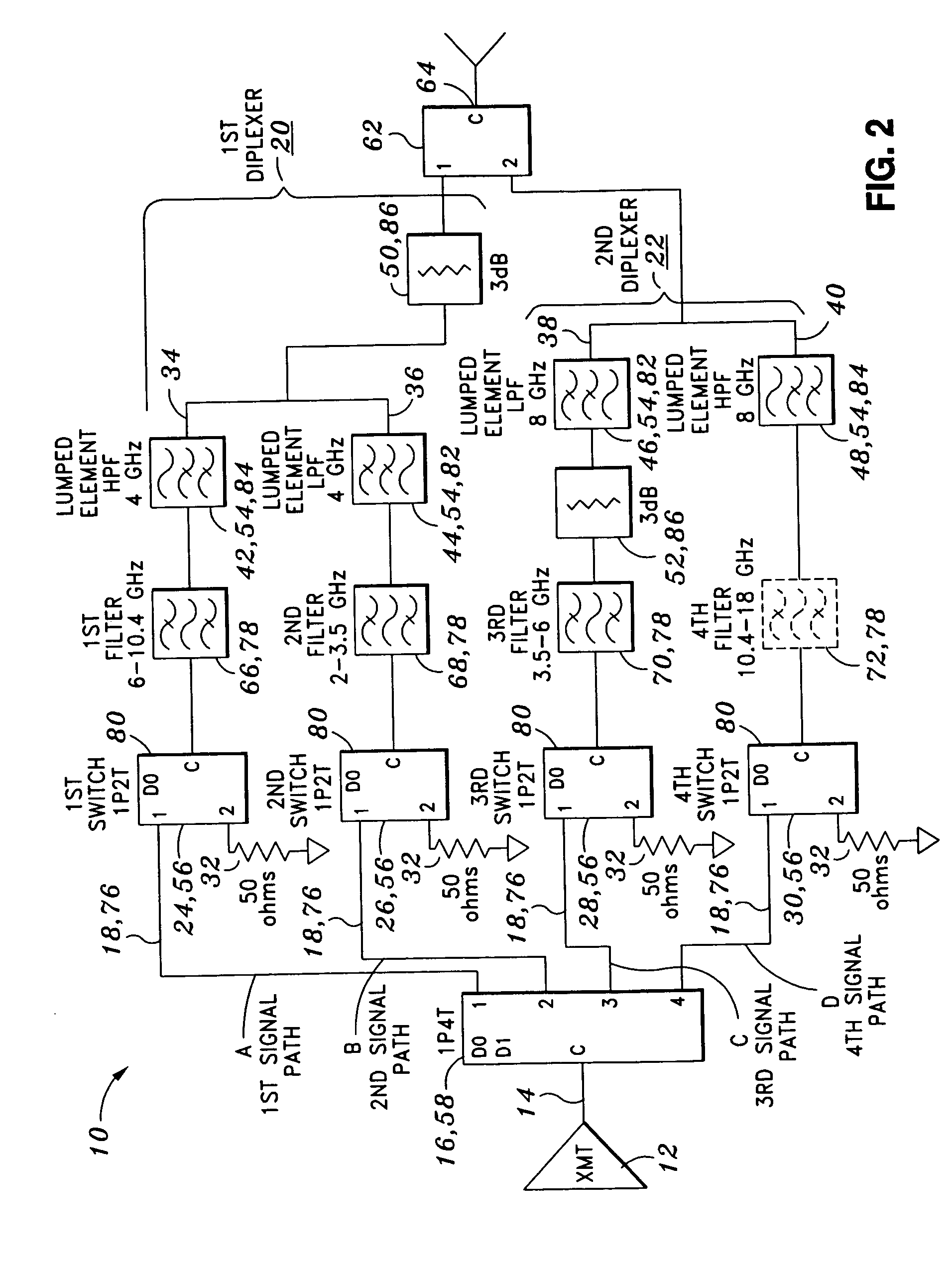Switched multiplexer method to combine multiple broadband RF sources
a multiplexer and broadband rf technology, applied in the field of unique configuration of switched multiplexers, can solve the problems of system df capability errors, secondary and third harmonic filtering cannot be performed by a fixed filter, etc., to avoid 3 db or more loss, reduce reflection, and reduce the effect of reflection
- Summary
- Abstract
- Description
- Claims
- Application Information
AI Technical Summary
Benefits of technology
Problems solved by technology
Method used
Image
Examples
Embodiment Construction
[0024] Referring now to the drawings wherein the showings are for purposes of illustrating the present invention and not for purposes of limiting the same, provided is a uniquely configured switched multiplexer 10 configured to operate in a frequency range of from fmin to fmax and to remove transmitter 12 harmonics of an input signal 14 to thereby create a stable output impedance across the frequency range.
[0025] In its broadest sense, the switched multiplexer 10 comprises a transmit switch 16, a bank of diplexers connected in parallel with one another, and a power combiner 62 connected to the bank of diplexers. The switched multiplexer 10 is specifically configured to combine a quantity of signal paths 76 each covering a sub-octave in the frequency range of from fmin to fmax. The low end of the frequency range is represented by fmin. The upper end of the frequency range is represented by fmax. The switched multiplexer 10 is configured to remove transmitter 12 harmonics of a known ...
PUM
 Login to View More
Login to View More Abstract
Description
Claims
Application Information
 Login to View More
Login to View More - R&D
- Intellectual Property
- Life Sciences
- Materials
- Tech Scout
- Unparalleled Data Quality
- Higher Quality Content
- 60% Fewer Hallucinations
Browse by: Latest US Patents, China's latest patents, Technical Efficacy Thesaurus, Application Domain, Technology Topic, Popular Technical Reports.
© 2025 PatSnap. All rights reserved.Legal|Privacy policy|Modern Slavery Act Transparency Statement|Sitemap|About US| Contact US: help@patsnap.com



